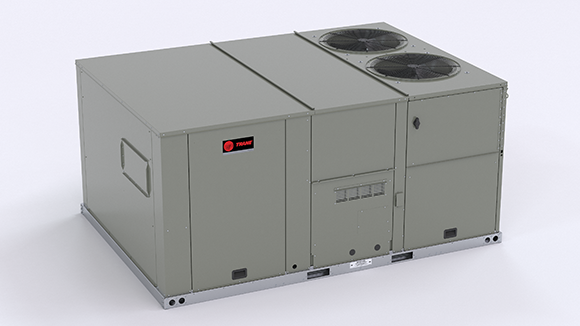Rooftop Unit
Rooftop Unit (RTU)
Overview
A Rooftop Unit (RTU) is a self-contained HVAC system typically installed on the roof of commercial and industrial buildings. It provides heating, ventilation, and air conditioning (HVAC) by drawing outdoor air, conditioning it (heating or cooling), and then delivering the treated air into the building via ductwork.
RTUs are packaged units, meaning all major components—compressor, condenser, evaporator, blower, filters, and control systems—are housed in a single cabinet. This makes installation and maintenance more convenient compared to split systems.
Key Components
-
Compressor: Compresses refrigerant to facilitate heat transfer.
-
Condenser Coil & Fan: Releases heat from the refrigerant to the outside air.
-
Evaporator Coil: Absorbs heat from return air to cool the building.
-
Blower/Fan: Circulates conditioned air into the building and draws in return air.
-
Burner or Electric Heat Elements: Provides heating in gas/electric or electric-only models.
-
Filters: Clean the air before it is circulated indoors.
-
Dampers: Regulate outdoor air intake for ventilation or economizer function.
-
Control System: Manages temperature setpoints, fan speeds, and economizer logic.
Types of RTUs
-
Cooling-Only RTUs: Provide only air conditioning; common in warm climates.
-
Gas/Electric RTUs: Use natural gas for heating and electricity for cooling.
-
Heat Pump RTUs: Use refrigerant to both heat and cool via reversing valve.
-
Multizone RTUs: Serve multiple areas of a building with individual temperature control.
Applications
RTUs are commonly used in:
-
Office buildings
-
Retail stores
-
Warehouses
-
Schools
-
Restaurants
They are preferred for their compact footprint, ease of access, and cost-effective installation, particularly where rooftop space is available and noise concerns are minimal.
Advantages
-
All-in-one design simplifies installation and servicing.
-
Saves interior space by mounting equipment on the roof.
-
Economizers can reduce energy consumption by using outdoor air for cooling.
-
Modular capacity makes them scalable for larger buildings.
Limitations
-
Limited to buildings with flat or low-slope roofs.
-
More exposed to weather, requiring proper sealing and maintenance.
-
Noise and vibration can transfer into the building if not properly isolated.
Maintenance Considerations
Regular inspections are critical to RTU performance:
-
Filter changes (monthly or quarterly)
-
Coil cleaning to maintain heat transfer efficiency
-
Belt and motor inspections
-
Controls and sensors calibration
-
Drain pan and condensate line cleaning
Related Equipment
-
Split HVAC Systems
-
Air Handling Units (AHUs)
-
Variable Air Volume (VAV) Systems
-
Packaged Terminal Air Conditioners (PTACs)

